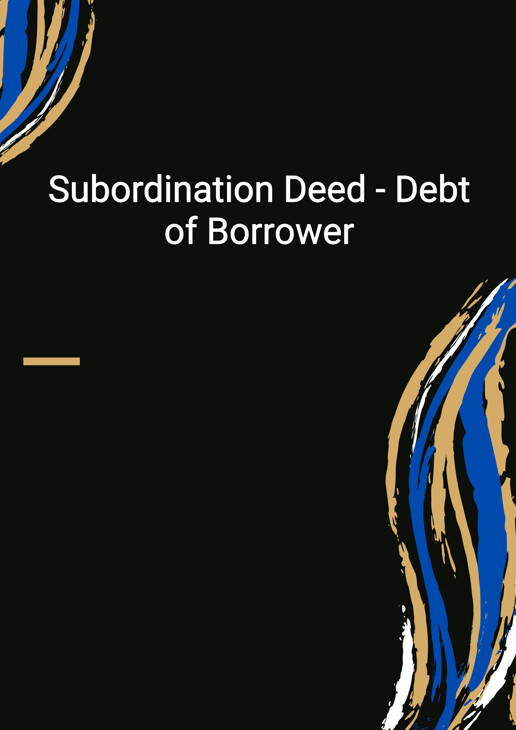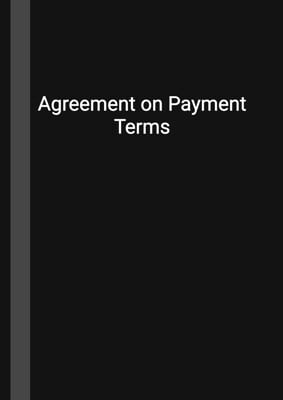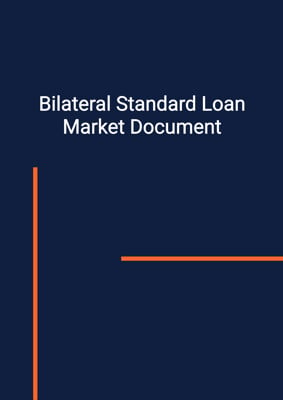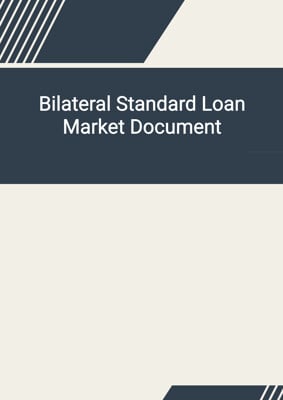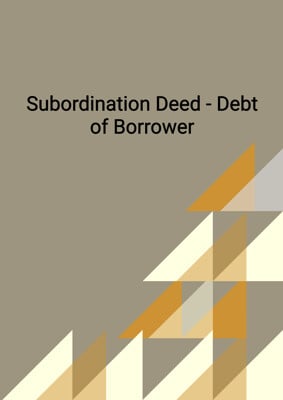How to Tailor the Document for Your Need?
01
Create Document
Fill in the details of the parties. You can click the "Fill with Member’s Information" button to complete it with information saved to your account.
02
Fill Information
Please fill in any additional information by following the step-by-step guide on the left hand side of the preview document and click the "Next" button.
03
Get Document
When you are done, click the "Get Document" button and you can download the document in Word or PDF format.
04
Review Document
The document should be signed by the authorised signatory (or directors of a company) and witnessed to complete the formality.
Document Preview
Document Description
This Subordination Deed is an agreement made between the subordinated lenders, the lender, and the borrower. The purpose of this document is to subordinate the subordinated debt to the senior debt, meaning that the subordinated debt will be paid after the senior debt has been fully paid. The subordinated lenders have agreed to this arrangement in connection with the finance documents.
The document begins with an interpretation section, defining key terms used throughout the deed. It also includes a construction clause, clarifying the meaning of certain terms and provisions.
The subordination provisions are outlined in section 2, stating that the subordinated debt shall be subordinated and subject to the prior payment of the senior debt. This means that the lender will be entitled to receive payment in full of the senior debt before any payment is made on the subordinated debt, except for permitted payments or after the occurrence of certain events described in the deed.
Section 3 outlines the undertakings of the borrower, including restrictions on making payments, creating security, and amending the subordinated finance documents without the consent of the lender.
Section 4 outlines the undertakings of the subordinated lenders, including restrictions on receiving payments, exercising set-off, and amending the subordinated finance documents without the consent of the lender.
Section 5 describes the permitted payments that the borrower may make on the subordinated debt, subject to certain conditions.
Section 6 establishes a trust and turnover mechanism, requiring any non-permitted payments received by a subordinated lender to be held on trust for the lender and paid to the lender for application towards the senior debt.
Section 7 addresses the subordination on insolvency, stating that in the event of certain insolvency events, the lender may claim, enforce, and prove for the subordinated debt and receive all distributions of the subordinated debt for application towards the senior debt.
Section 8 addresses the treatment of distributions, stating that any distributions received by a subordinated lender in respect of the subordinated debt shall be held on trust for the lender and paid to the lender for application towards the senior debt.
Section 9 prohibits the subordinated lenders from accelerating the subordinated debt, enforcing any security, or taking any action that would impair the subordination.
Section 10 grants the lender the power to exercise voting rights in respect of the subordinated debt.
Section 11 provides that the lender's waivers and consents under the finance documents shall also apply to the subordinated lenders.
Section 12 contains representations and warranties made by the borrower and each subordinated lender.
Section 13 requires the subordinated lenders to notify the lender of any defaults or potential defaults under the subordinated finance documents and to provide details of the amount of subordinated debt owed to them.
Section 14 contains provisions to protect the subordination, including provisions for continuing subordination, non-impairment, immediate recourse, and the exercise of subordinated lenders' rights.
Section 15 clarifies that the subordinated debt remains owing and due in accordance with the subordinated finance documents and that neither the borrower nor any subordinated lender has any rights under the deed.
Section 16 establishes the order of distributions, stating that proceeds received or recovered by the lender shall be applied first to costs and expenses, then to the senior debt, and any surplus shall be paid to the subordinated lenders.
Section 17 grants the lender a power of attorney to act on behalf of the subordinated lenders.
Section 18 addresses changes to the parties, including restrictions on assignment or transfer of rights or obligations under the deed.
Section 19 addresses expenses, stamp duty, and interest, including provisions for the borrower to pay transaction expenses, amendment costs, enforcement costs, stamp taxes, and default interest.
Section 20 provides for additional indemnities, including a currency indemnity and indemnities for losses, liabilities, damages, costs, and expenses incurred by the lender or any delegate.
Section 21 allows the lender to set off obligations due from the borrower or any subordinated lender against obligations owed by the lender to the borrower.
Section 22 addresses rights, amendments, waivers, and determinations, including provisions for remedies, amendments, waivers, and determinations by the lender or any delegate.
Section 23 provides for partial invalidity, stating that if any provision of the deed becomes illegal, invalid, or unenforceable, the remaining provisions shall remain in full force and effect.
Section 24 establishes the requirements for notices under the deed, including the addresses and contact details of the parties.
Section 25 allows the deed to be executed in counterparts.
Section 26 contains miscellaneous provisions, including the perpetuity period, tax gross up and indemnities, and the governing law of the deed.
Section 27 establishes the jurisdiction of the jurisdiction state courts to settle any disputes arising out of the deed.
Section 28 provides for the appointment of a process agent for service of process in relation to any proceedings before the jurisdiction state courts, if applicable.
The document is executed by the subordinated lenders, the lender, and the borrower, with provisions for witnesses or witnessing solicitors.
This Subordination Deed is an important document that establishes the subordination of the subordinated debt to the senior debt. It ensures that the lender will be paid in full before any payment is made on the subordinated debt, except for permitted payments or after certain events. The deed also includes provisions to protect the subordination and address various obligations and undertakings of the borrower and subordinated lenders.
Each section of the document provides detailed information and sets out the rights, obligations, and restrictions of the parties involved. The deed is legally binding and enforceable, and it is intended to be delivered on the date specified in the document.
How to use this document?
To use this Subordination Deed, follow these steps:
1. Review the entire document to understand the subordination of the subordinated debt to the senior debt and the rights and obligations of the parties involved.
2. Ensure that all parties involved, including the subordinated lenders, the lender, and the borrower, have agreed to the terms and conditions of the deed.
3. Execute the deed as a deed, ensuring that it is signed, sealed, and delivered by the subordinated lenders, the lender, and the borrower.
4. Keep a copy of the executed deed for your records.
5. If necessary, consult with legal professionals to ensure compliance with applicable laws and regulations.
Please note that this guidance is for informational purposes only and does not constitute legal advice. It is recommended to seek professional legal advice when using or executing legal documents.
Not the right document?
Don’t worry, we have thousands of documents for you to choose from:
